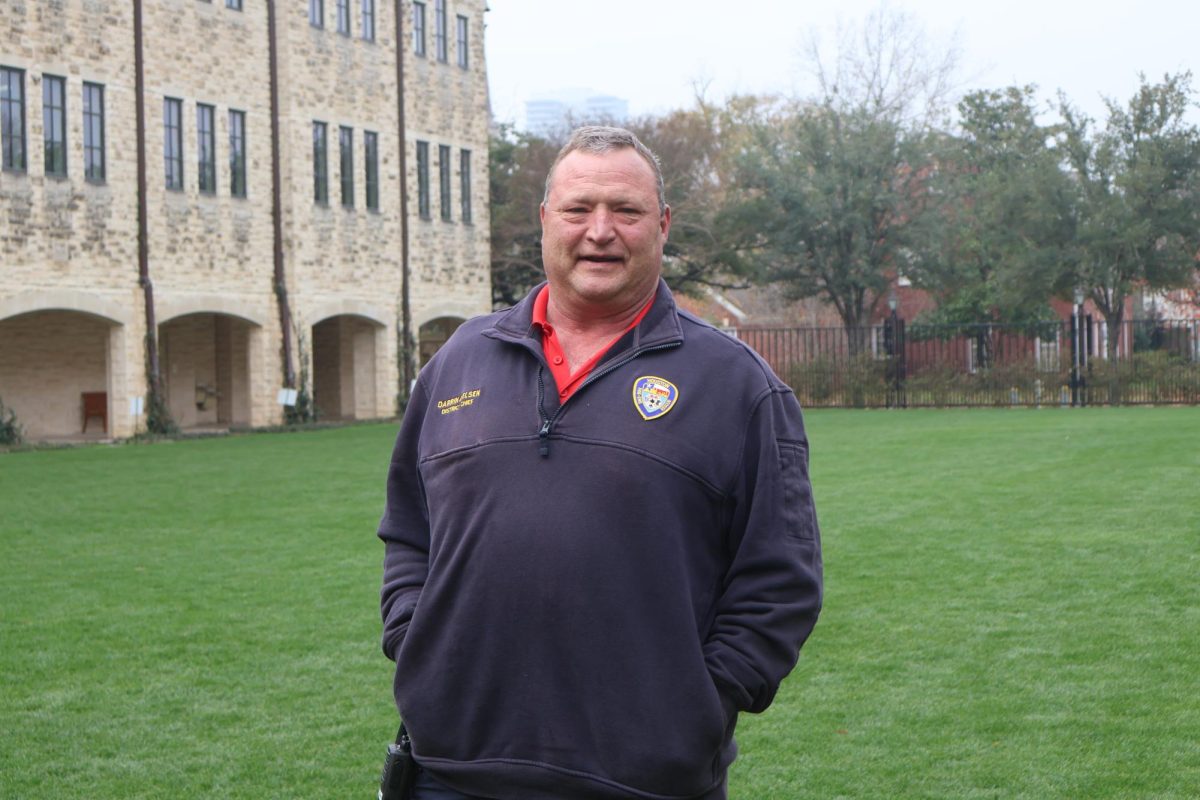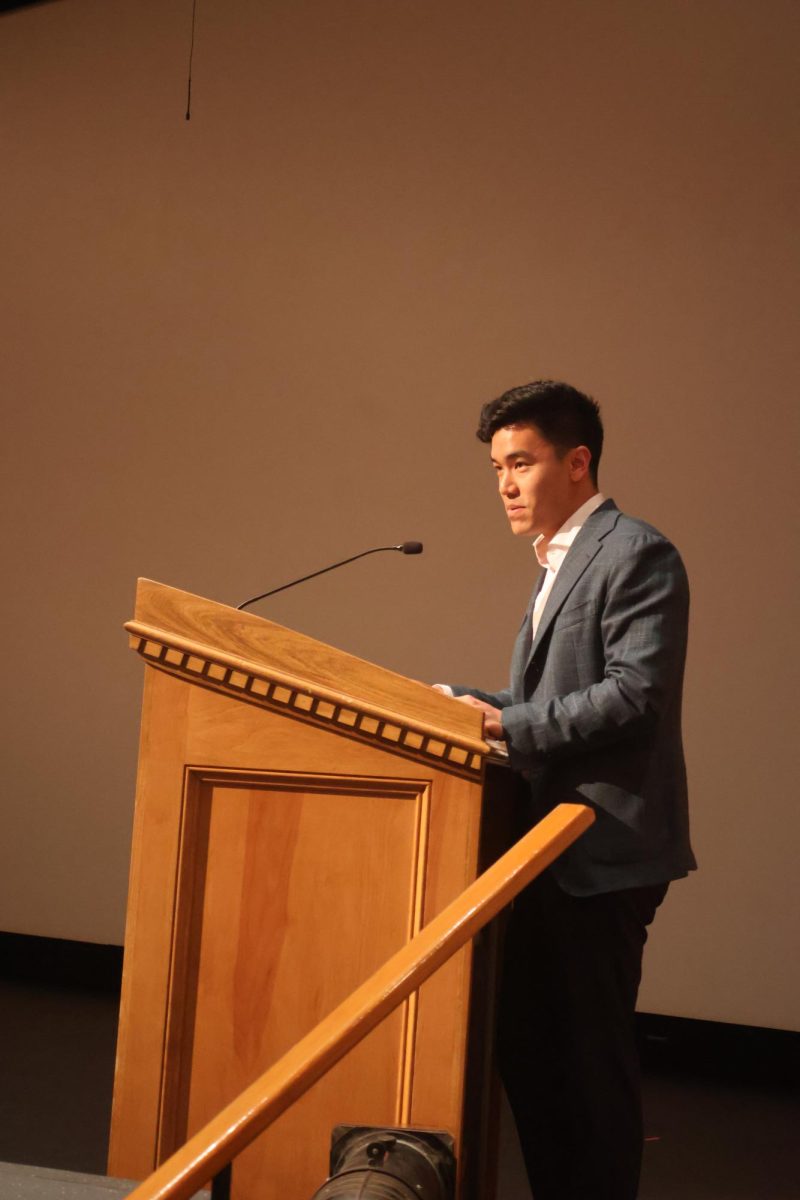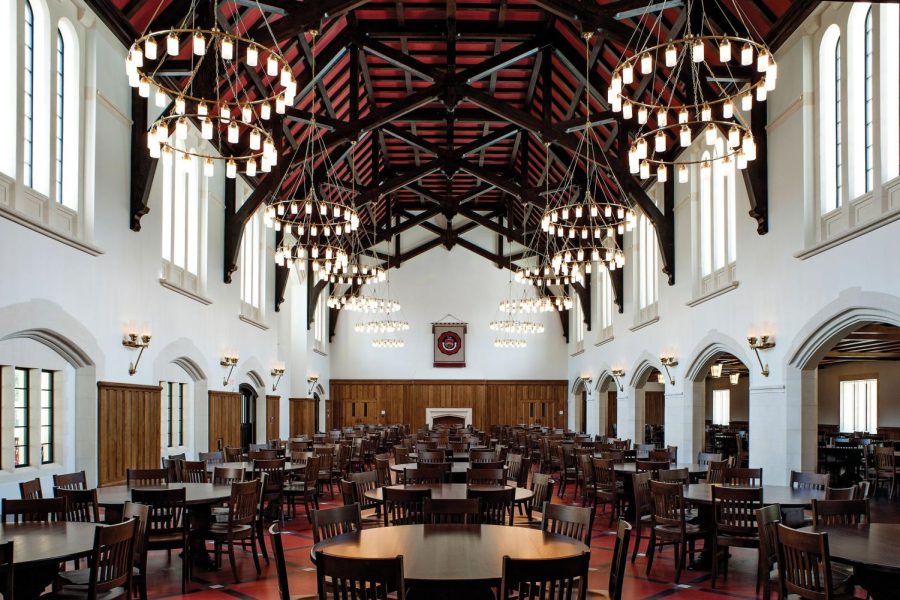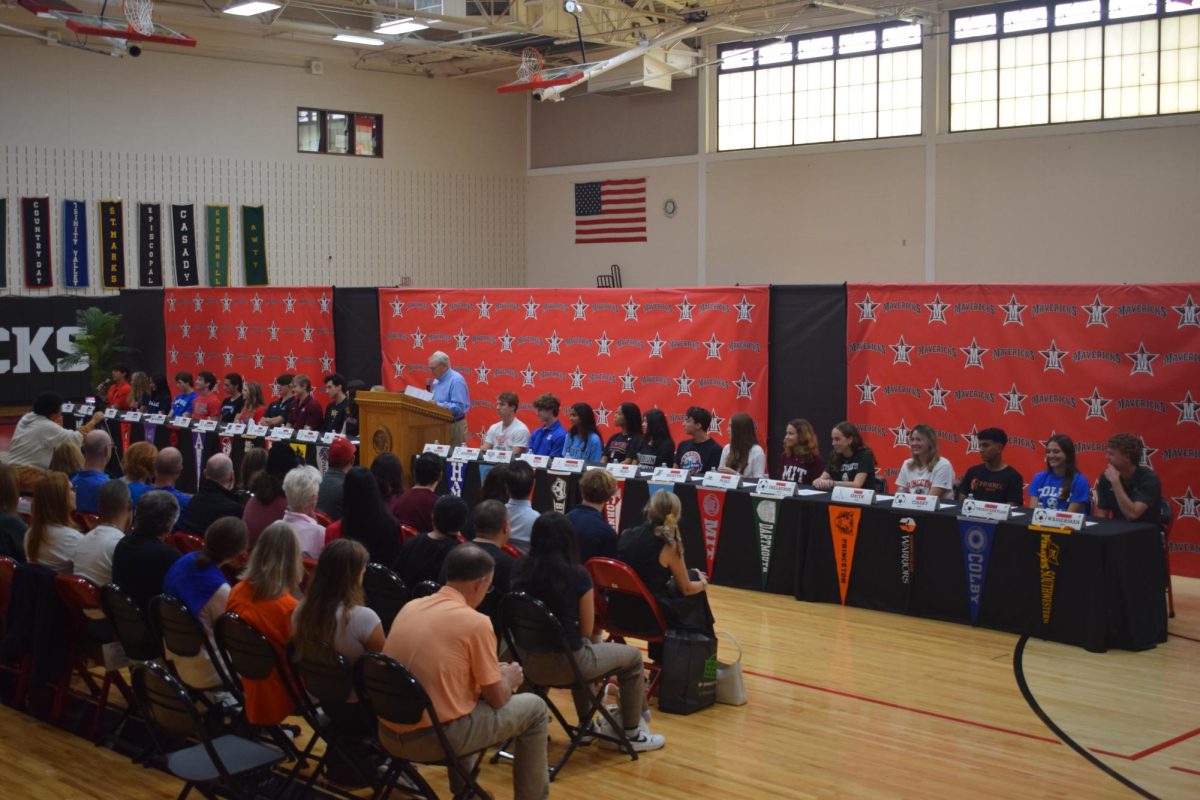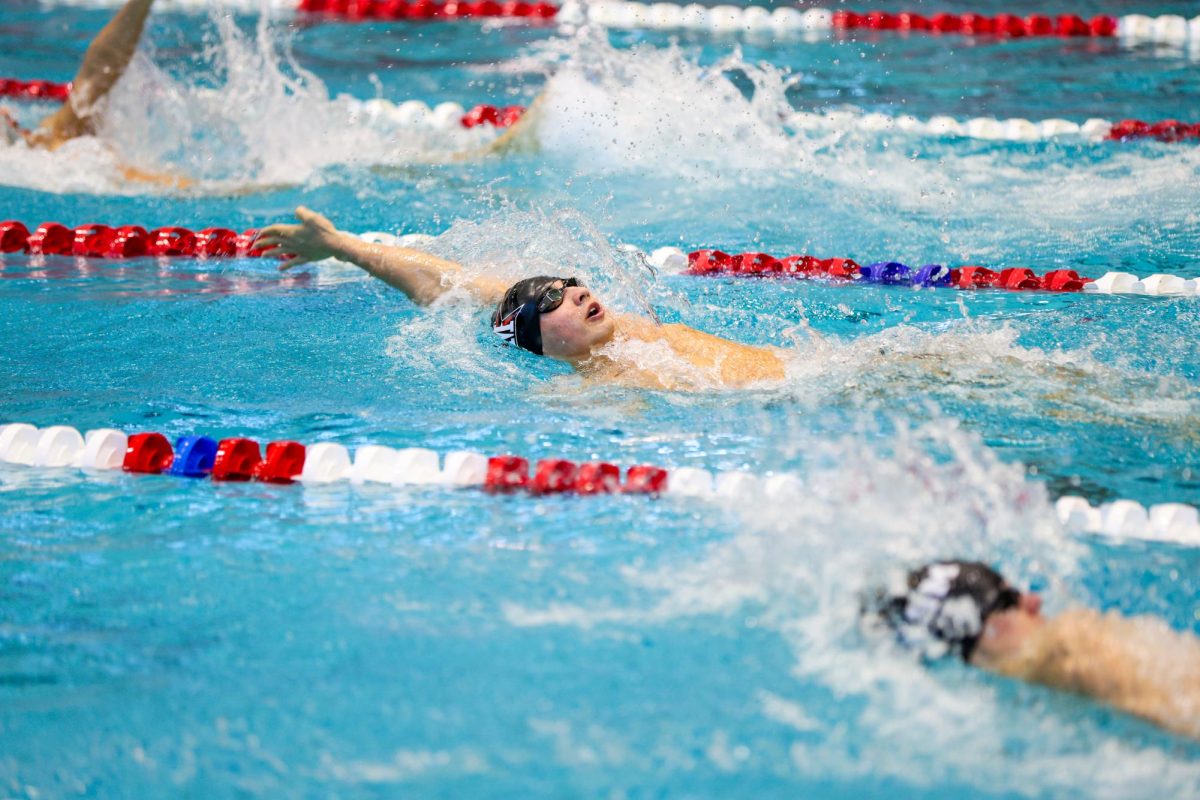At 2:30 a.m. on a chilly Thursday morning, Paige Hennighan was extinguishing flames at a local apartment complex. At 6:30 a.m., she left her shift at the fire station. By 7 a.m., she was patrolling St. John’s grounds.
Hennighan works a variety of jobs on campus two days a week as an ambassador. When not on campus, she and other ambassadors work 24-hour shifts at the fire department twice a week.
Richard Still, Director of Safety, Security and Physical Plant, started the ambassador program in the 2014-15 school year. Still realized that the School had a strong security presence but could benefit from more preparation in case of an emergency—an idea he brought up with then-headmaster Mark Desjardins.
“I gave him the idea of starting to bring firemen in here,” Still said. “And he said, ‘let’s do it.’”
Now ambassadors, in their signature red shirts, act as a hybrid security and medical force on campus. In addition to running carpool in the morning and afternoon, ambassadors conduct monthly inspections to make sure fire extinguishers, alarms and AEDs, also known as defibrillators, are compliant with city regulations. Because ambassadors cannot set off test alarms during the school day, many of these check-ups happen while students are on breaks and school holidays.
Ambassadors are also the first to assist trainers and nurses. In the event of an emergency, they direct ambulances to the correct campus gate and facilitate the transition of the victim into the vehicle. Trained as EMTs, ambassadors know what information ambulance operators need and have it ready on scene.
“Then the operators can focus more on patient care and less on trying to get the story,” ambassador coordinator Rick Still, Richard’s son, said.
When working at the fire station, ambassadors are often the ones to report to emergencies at the School. When on campus, the responders in the situation will be their coworkers at the fire station. Not only are these connections helpful in facilitating emergency responses—these crew relationships are at the core of the dual firefighter and ambassador program.
Despite the exhaustion that comes with working 34 hours straight at times—24 hours at the fire station followed by 10 at SJS—“these are the people I eat with, hang out with, put out fires with,” Hennighan said. “It’s one big family.”
Richard appreciates the strong community that the ambassador program has fostered.
“The more tenured guys I can have here, the more familiar they are with the people on campus,” he said. “I like the fact that we’ve been able to keep the same firemen for a number of years.”
In addition to their security and medical duties, ambassadors consistently monitor the fire channel on their handheld radios for reports on the surrounding area.
Ambassadors are constantly learning from situations that occur on other campuses. Richard, along with his team of ambassadors and police officers, always analyze these incidents and ensure they are equipped to respond to them in the event of a similar scenario at SJS.
“Just because we think our system’s pretty good now doesn’t mean it can’t be improved,” Rick said.
Despite the ambassadors’ constantly evolving role, the program maintains the same uniqueness as it did a decade ago. While many schools have nurses and security personnel, K-12 institutions rarely have trained firefighters and EMTs on campus.
“They’re part of the community,” Richard said. “When you see these guys, you should say thank you for your service. They appreciate that.”











